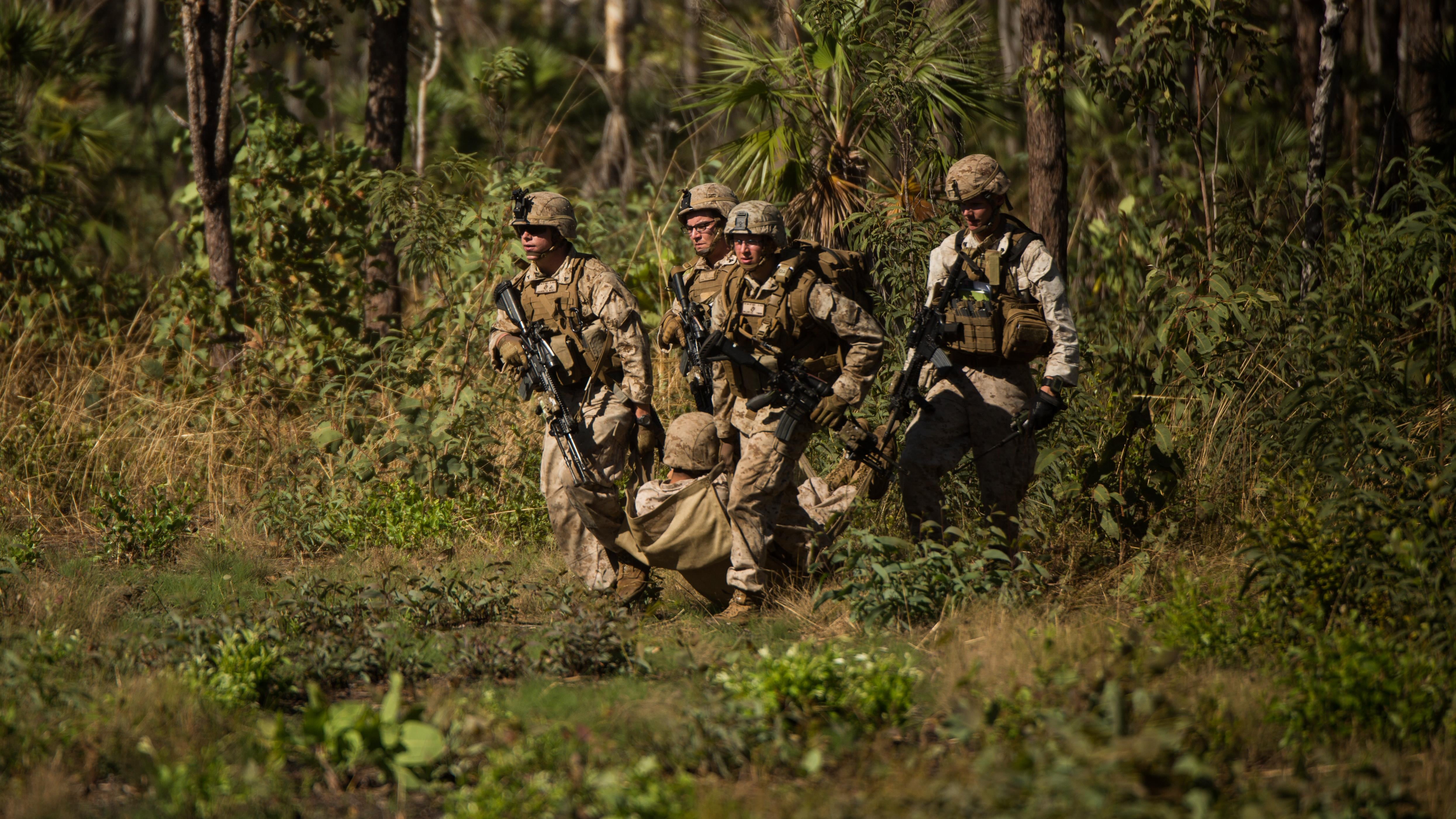The Corps is getting underway with one of its biggest redistribution of forces since World War II as thousands of Marines are shifting to the Pacific and moving around the region in an effort to prepare to counter rising threats from China to North Korea.
At any one time there are 35,000 Marines forward deployed around the globe — 31,000 of those are with III Marine Expeditionary Force spread throughout the Pacific, and 22,000 of those are centrally located on the Japanese Island of Okinawa.
Now, the Corps wants to move roughly 9,000 of those forces from Okinawa, Japan, to other regions like Guam and Hawaii.
Redistributing the force makes it harder for any near-peer adversary to strike Marine forces, according to to Gayle von Eckartsberg, the director of the Pacific division with the Marine Corps.
The Corps is also bolstering its annual training rotation to Darwin, Australia, sending additional howitzers and MV-22 Ospreys for the six-month exercise rotation. In March, officials announced the seventh rotation to Darwin, which will be the largest ever with 1,587 U.S. Marines, eight MV-22 Ospreys and six M777 howitzers.

The realignment of Marines in the Pacific is “the greatest movement of Marine forces” since World War II, Eckartsberg told audience members on April 9 at the Navy League’s annual Sea-Air-Space exposition.
And why is the Corps amid such a massive shift in its forces? Several of the major threats outlined in the new National Defense Strategy operate in the Pacific to include Russia, China, North Korea, Eckartsberg explained.
“We are the fight tonight force,” she said.
The Corps is “in a constant state of motion” and many of the locations Marine forces are redistributing to are merely places to “gas up” or “a place to hang your hat temporarily.”
This distributive force strategy complicates efforts by rising actors like China to concentrate firepower or attacks on the Corps.
The U.S. and Japanese governments are investing billions of dollars to move Okinawa Marines to Guam and Hawaii and to shift various aviation assets to the Marine Corps air base aboard Iwakuni, Japan.
Japan itself has invested nearly $3.1 billion dollars to relocate thousands of Marines to the island of Guam, a process that is still ongoing, Eckartsberg said.
About 5,000 Marines will ultimately be stationed on Guam, with 4,100 of those forces coming from Okinawa, Lt. Col. Curtis L. Hill told Marine Corps Times in an emailed statement.
But those Marines will not arrive until facilities and training centers are complete. Currently only about 20 Marines are considered permanent personnel on Guam to assist with development.
“Construction on Guam has been ongoing since 2010, primarily on the North Ramp of Naval Support Activity, Andersen,” Hill said.
“The first facility, an aircraft maintenance hangar, is currently being completed and should be operational by the end of summer 2018.”
Construction of firing ranges on the Island will also commence soon on Andersen’s Northwest Field area.
Construction of the base and area will continue until about 2021, Hill explained.
And the shift will turn Guam into what Eckartsberg described as a “strategic hub” in the region.
Shawn Snow is the senior reporter for Marine Corps Times and a Marine Corps veteran.




